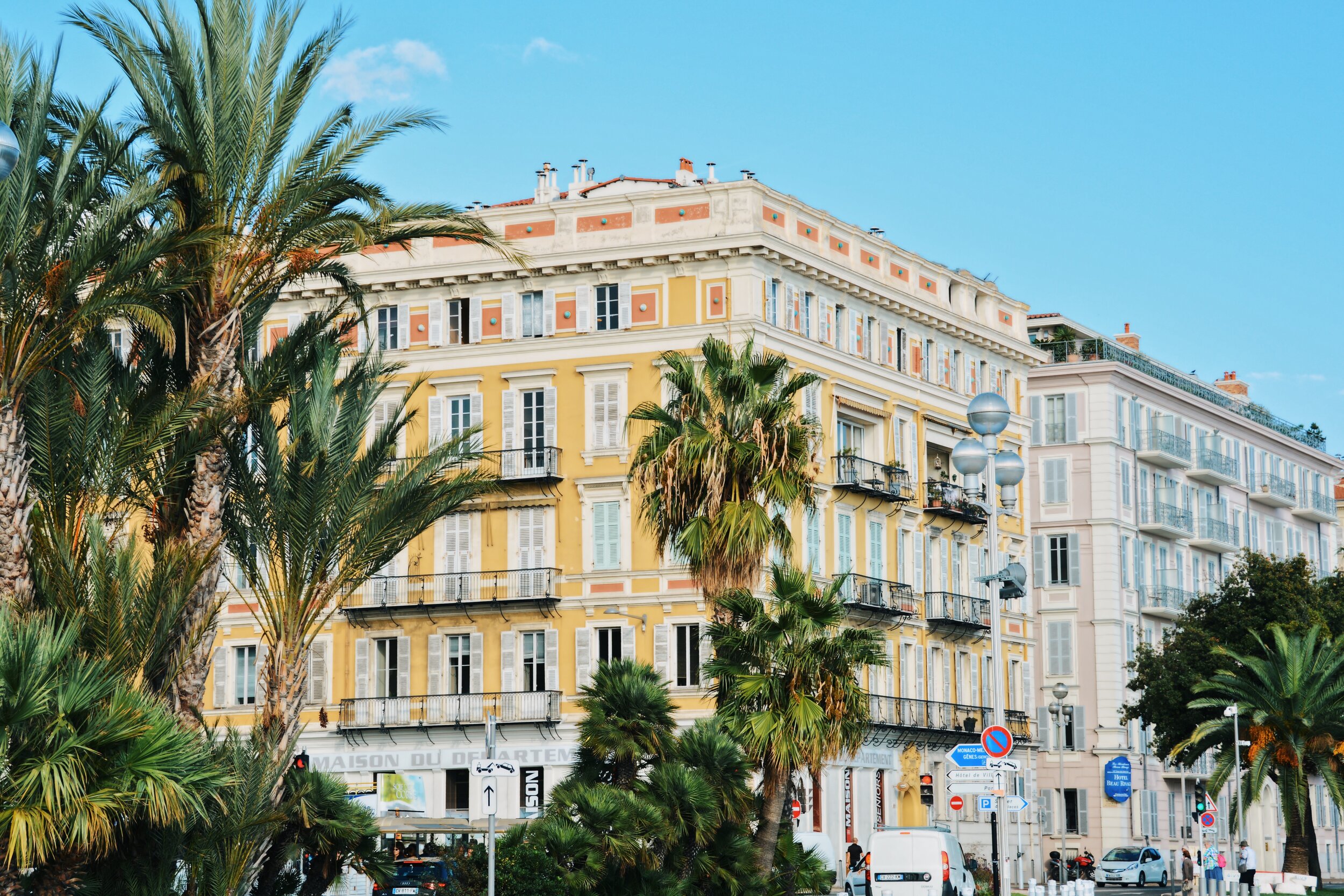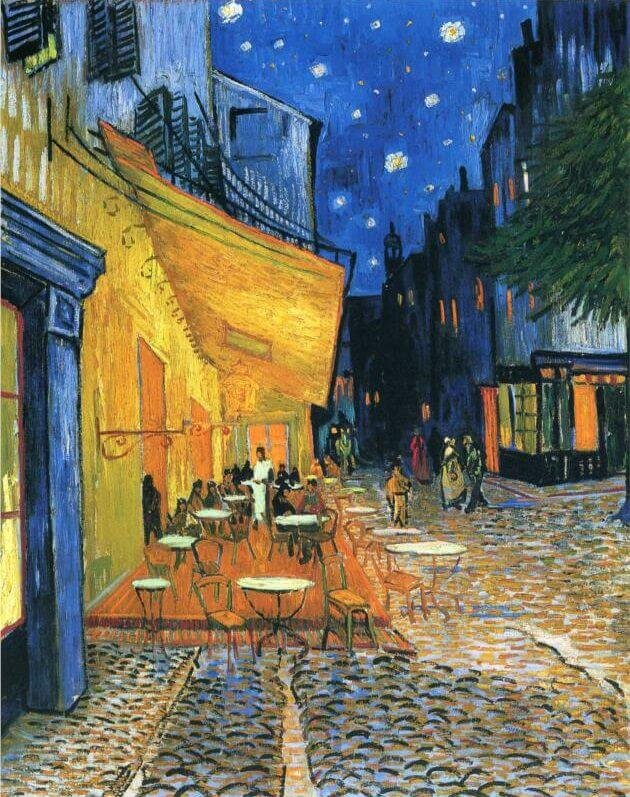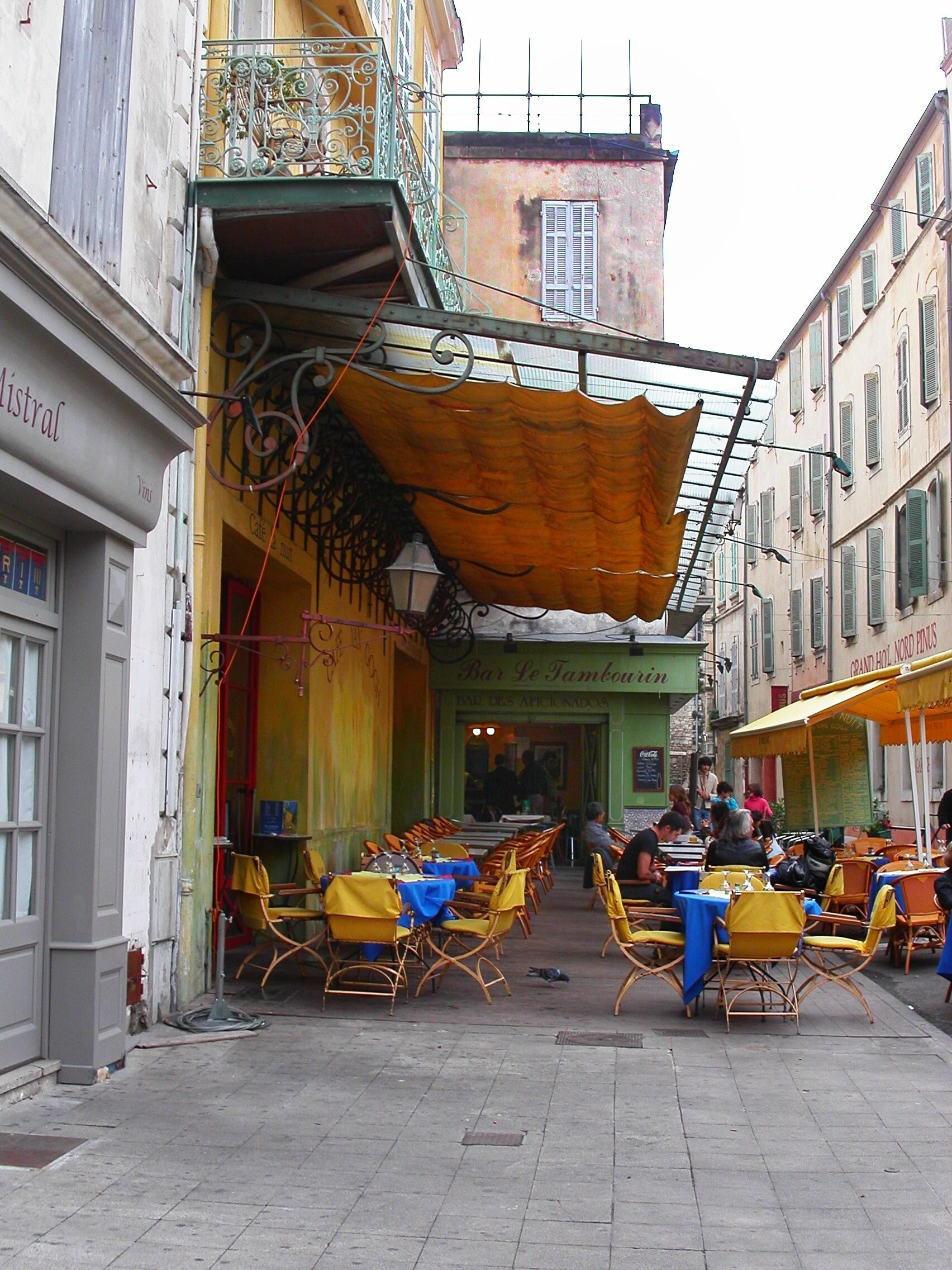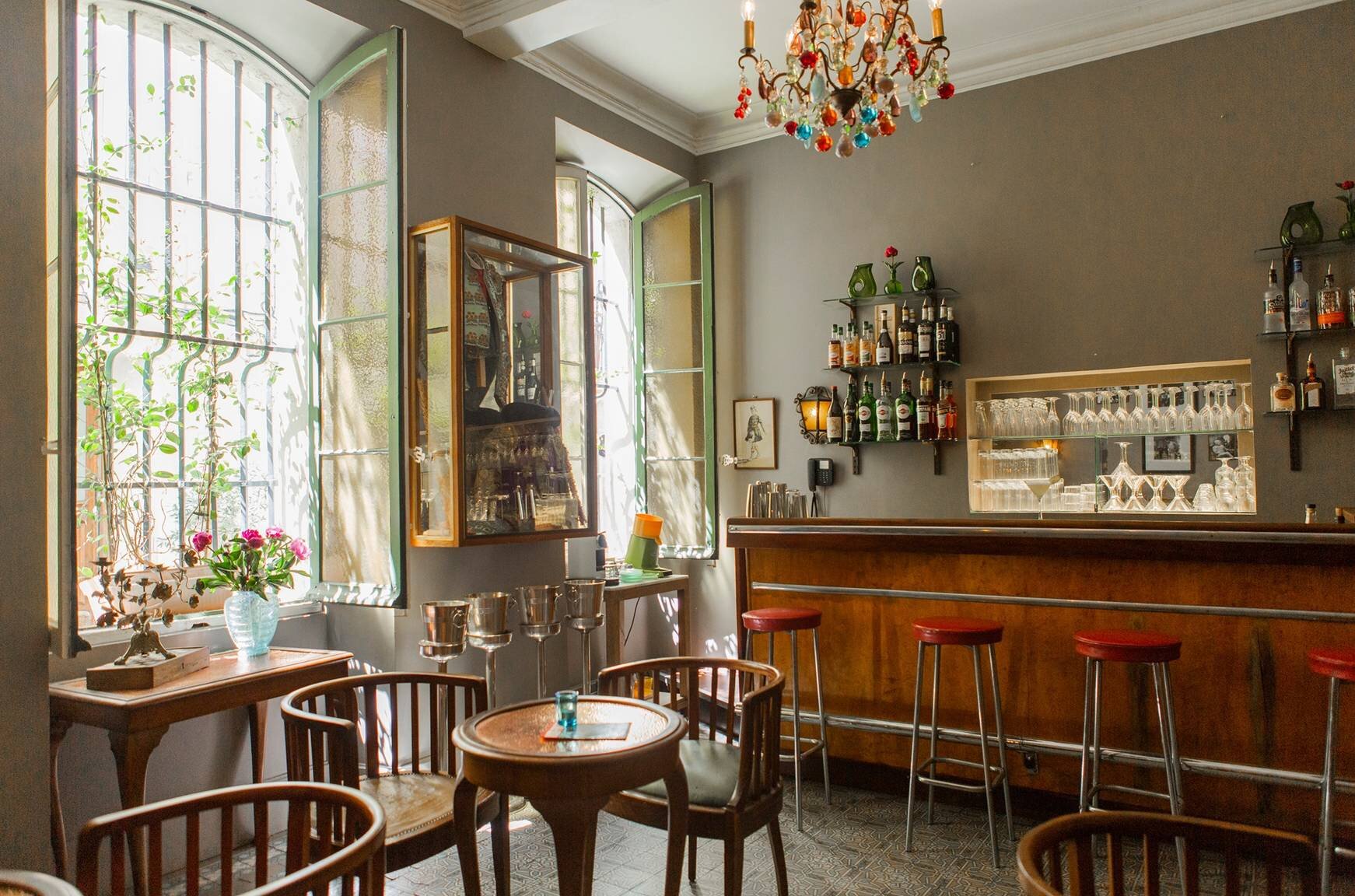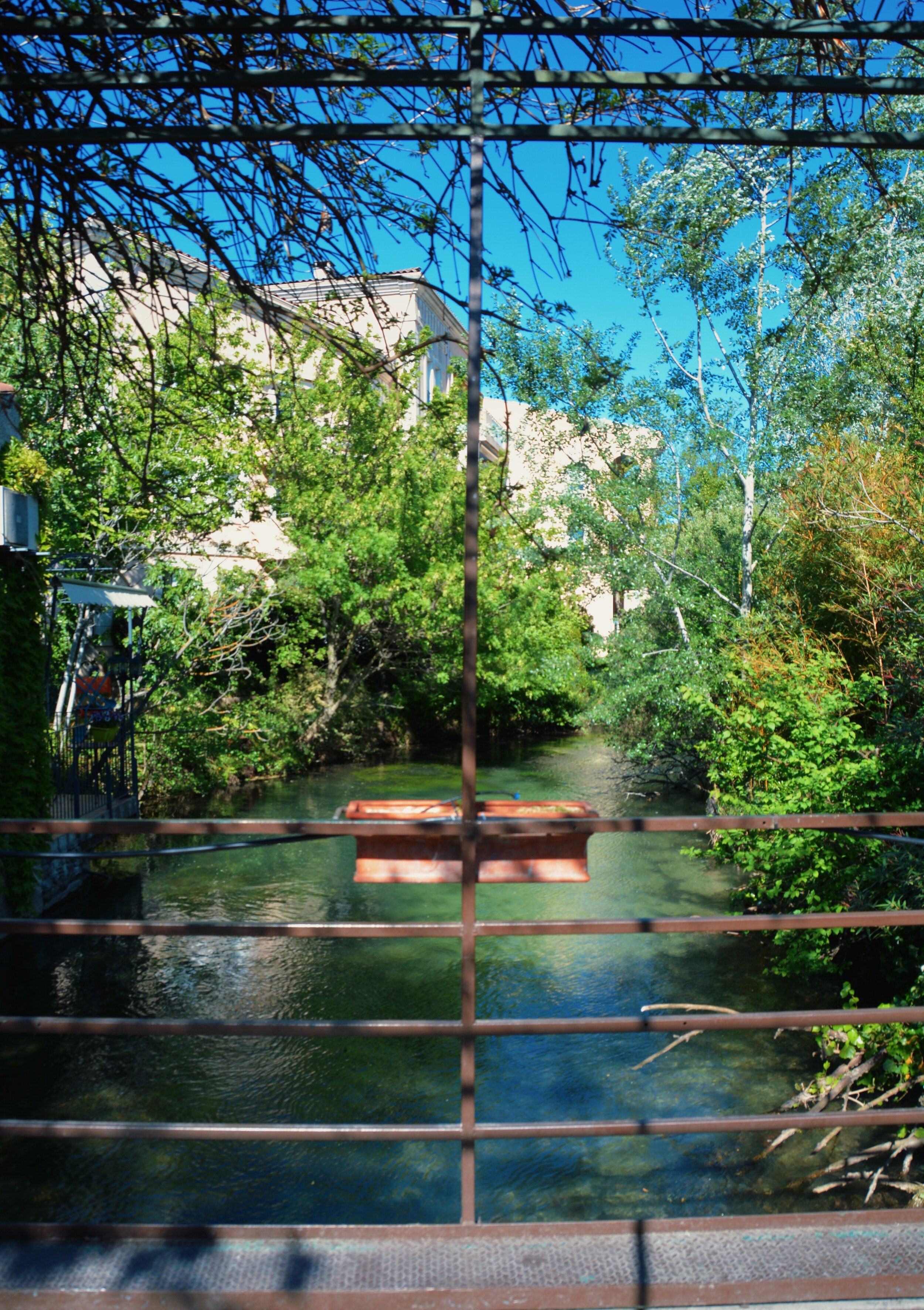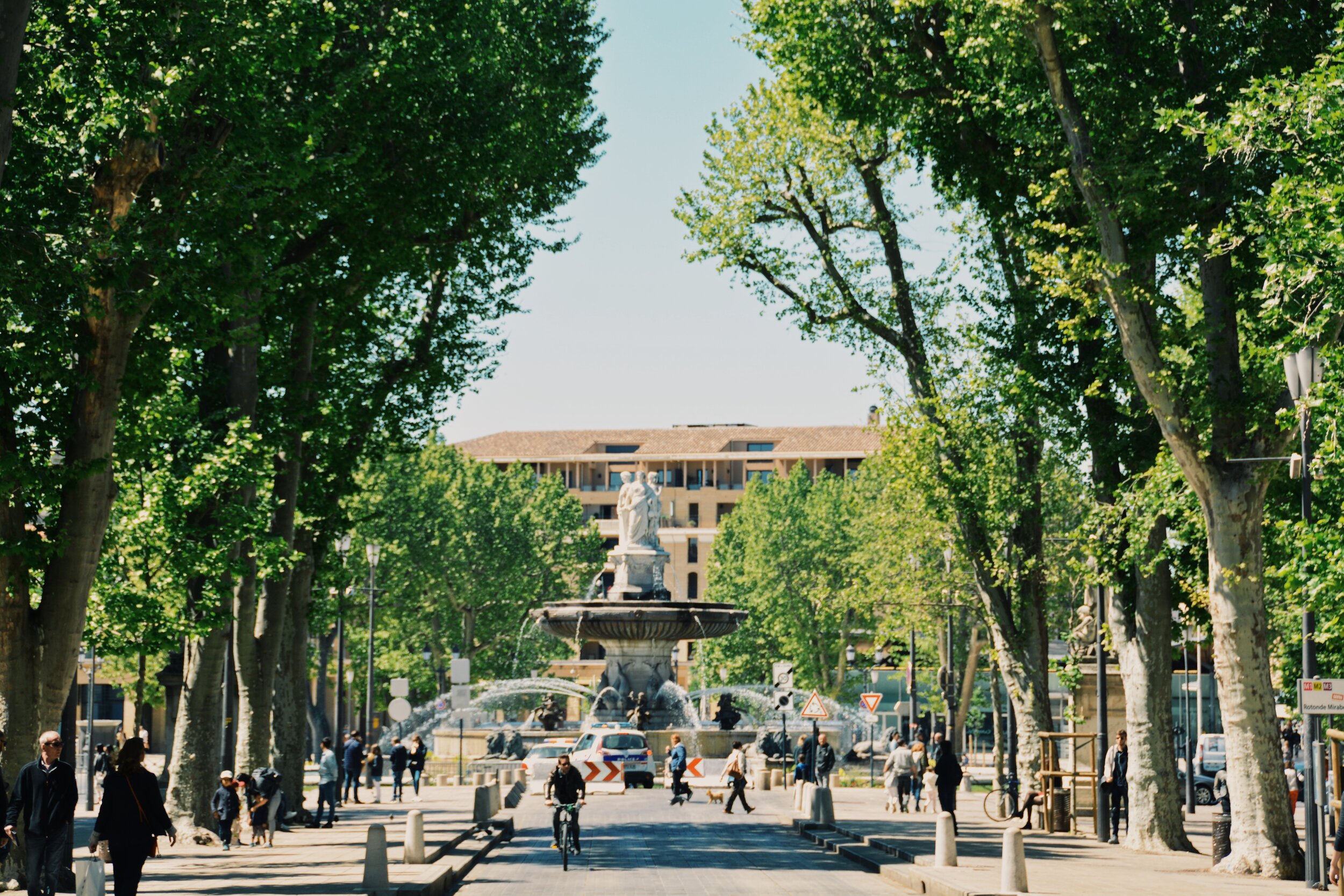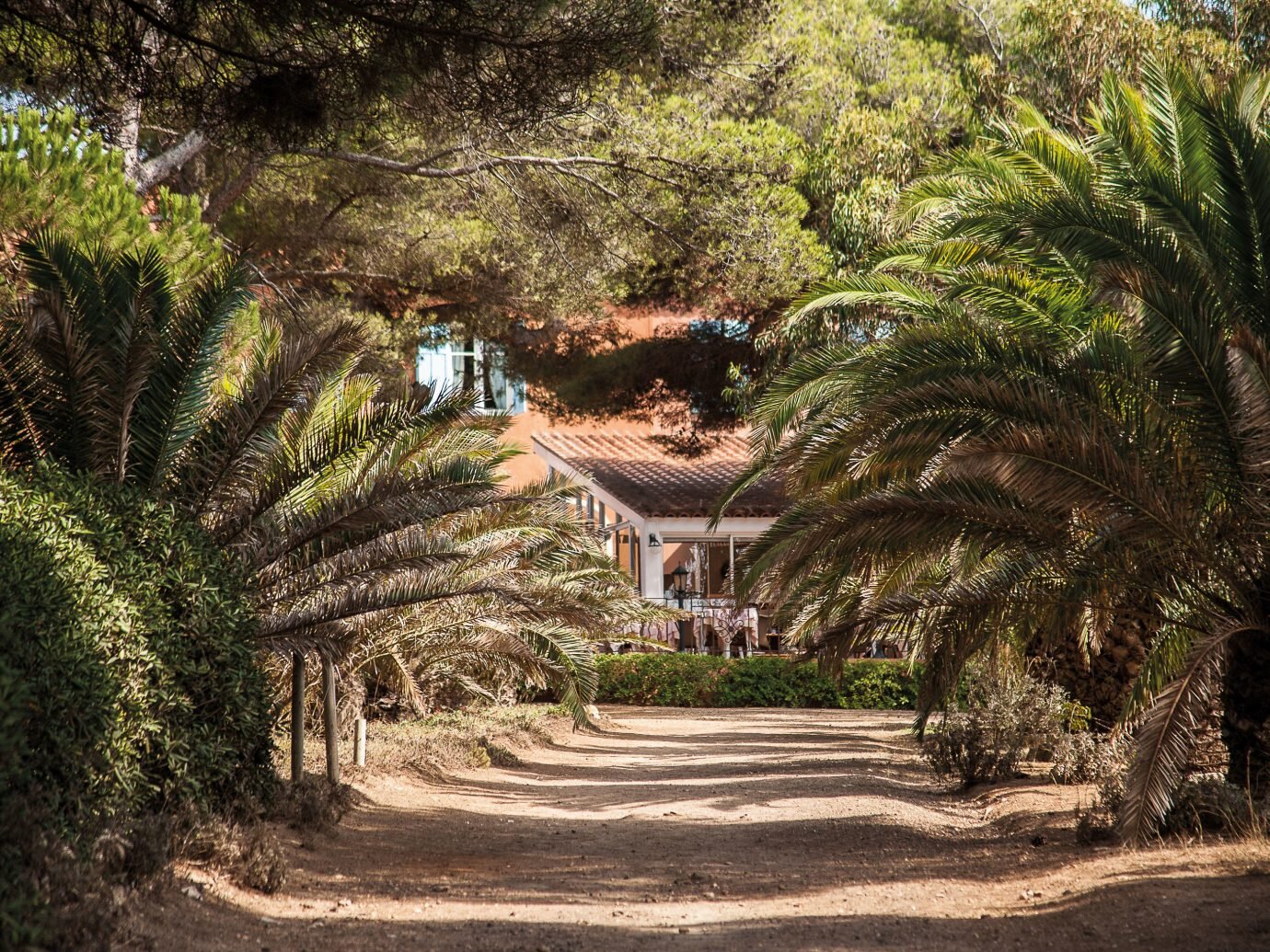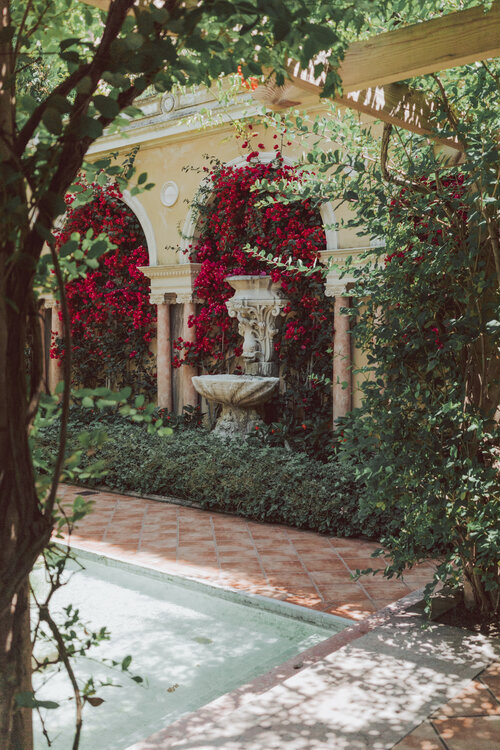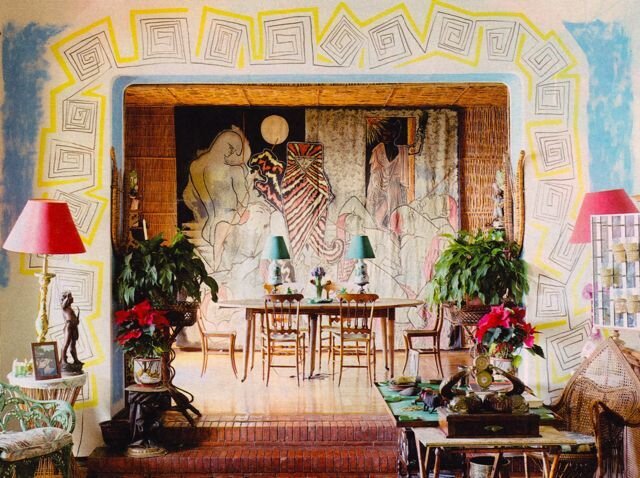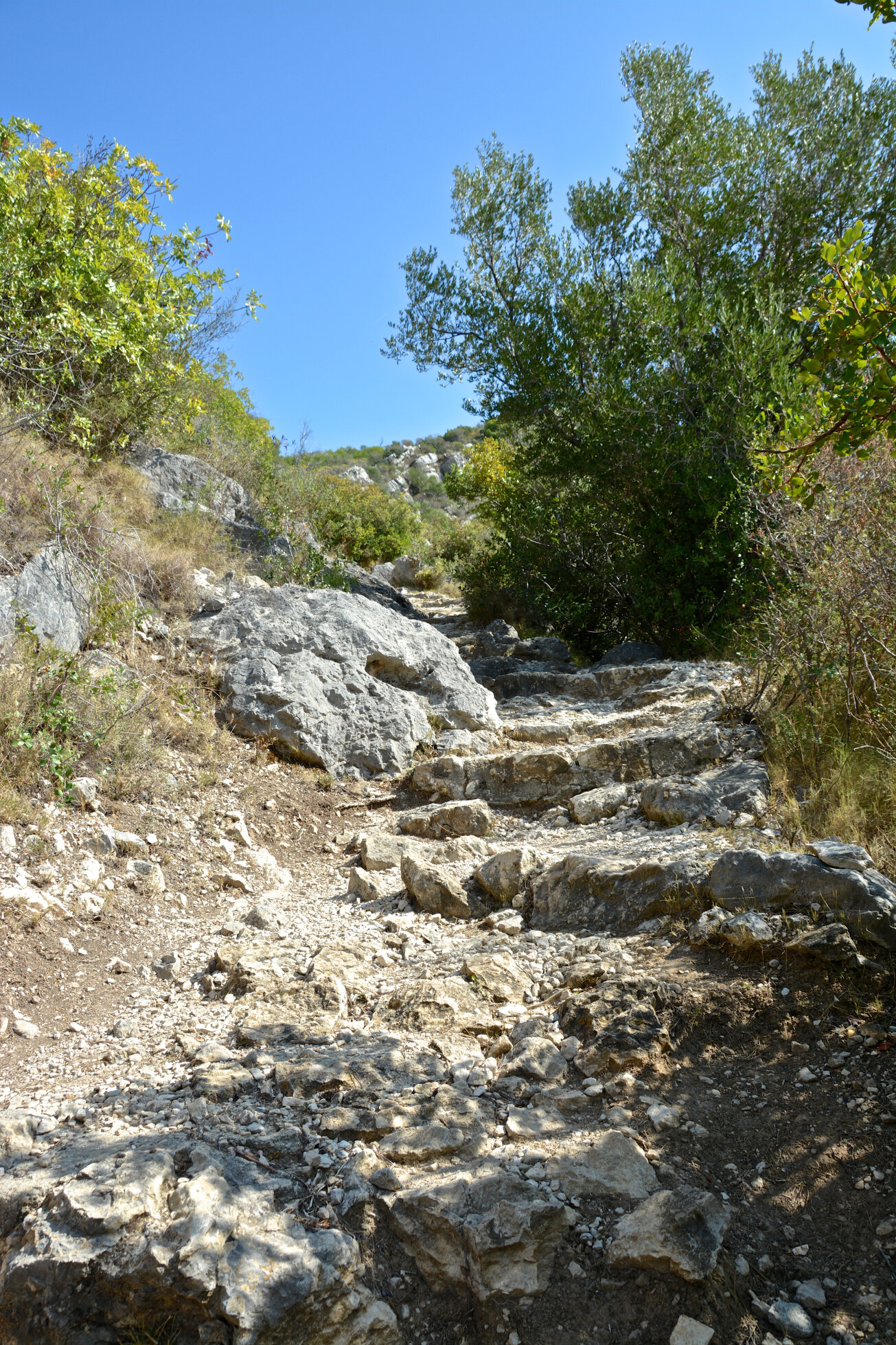A Jaunt to Provence: From the Country to the Coast Savoring the essence of the South of France
the south of france
From Paris, we move south to Provence, a region awash in sunshine and beauty. From the lavender fields of the Vaucluse to the turquoise waters of the French Riviera, Provence encompasses the country, the coastline, and the in between—Alpine mountains and centuries-old vineyards. Provence’s natural beauty is enhanced by a cultural allure that makes it intriguing in the way that places become when human beings tell stories about them. And for a long time, people have been telling stories, through their life and work and play, about this place. Long a spiritual retreat for artists and a playground for the jet set, a bohemian refuge and at the same time, a cultured escape. Of course it follows that Provence ignites the imagination.
For the purposes of our virtual tour of France, we have compiled an ambitious Provençal itinerary—one that takes us from the countryside to the coast. If this were a real trip, doing it well would take time. Doing it hypothetically offers us precisely that, so we are taking full advantage, packing our itinerary to the brim, and taking the Southern French jaunt of our fantasies.
Our trip begins in Arles and ends in Èze, a little village outside of Nice, roughly 30 minutes by car from the Italian border. A 3-hour train ride on the high-speed TGV train from Gare de Lyon in central Paris deposits us in Nîmes. There, we rent a car and head south.
Part 1: The Country
arles
“Tired of the busy city life and the cold northern climate, Van Gogh had headed South in search of warmer weather, and above all to find the bright light and colours of Provence so as to further modernize his new way of painting. According to his brother Theo, he went ‘first to Arles to get his bearings and then probably on to Marseille.’ That plan changed however: Van Gogh found in the beautiful countryside of Arles what he had been looking for, and never went to Marseille.”
— Fondation Vincent Van Gogh Arles
In 1888, Vincent Van Gogh left the cold bustle of Paris for the warm embrace of Arles. Arles forever altered his perspective and his art, and our time here will be spent walking in his footsteps to learn more about the spirit of the town that made a lasting impact on modern art.
To slip into the world of Van Gogh, we’ll take this self-guided walking tour which takes half a day and stops along the sites eternalized in his work.
With a firmer grasp of Arles’ artistic past, we’ll move into its present with a visit to the Fondation Vincent van Gogh Arles, whose mission is to continue tracing and celebrating the artist’s wide impact on modern art.
Arles is not art alone. There are Roman ruins, a relic of the city’s history on the trade route of the Roman empire. In addition to a Roman amphitheater, a theater, baths, and a forum, Arles has a 12th century Romanesque cathedral—the Cloître Saint-Trophime.
After a day of art and architecture, we’ll have a drink at Hôtel Nord-Pinus, a Hemingway haunt where Picasso felt at home. Jean Cocteau described it as a hotel with a soul.
In Arles:
Fondation Vincent van Gogh Arles | 35 Rue du Dr Fanton, 13200 Arles
Cloître Saint-Trophime |20 Rue du Cloître, 13200 Arles
Grand Hôtel Nord-Pinus | 14 Place du Forum, 13200 Arles
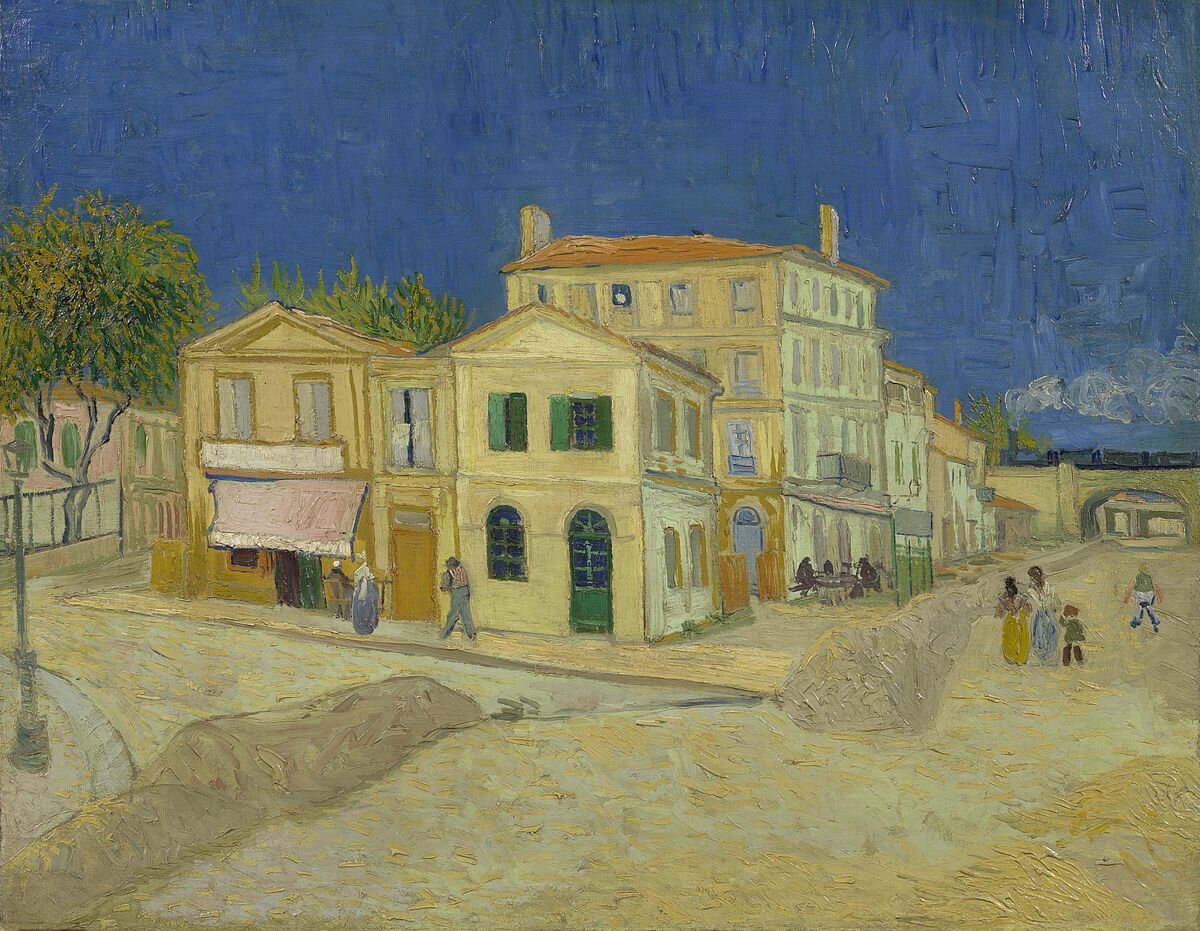
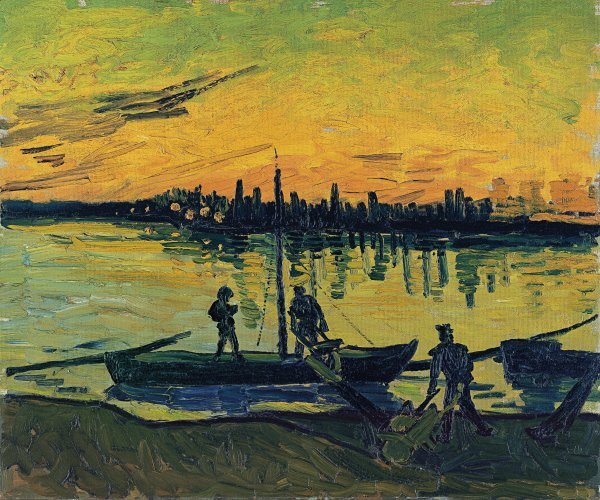
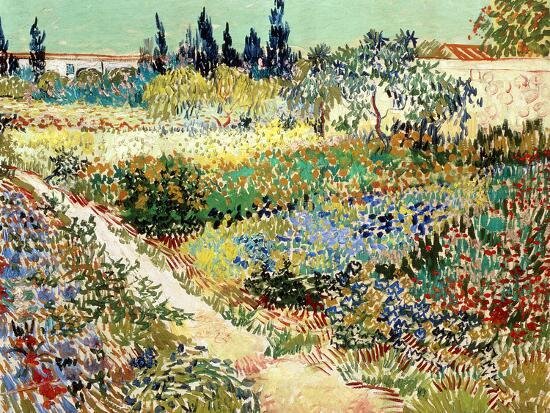
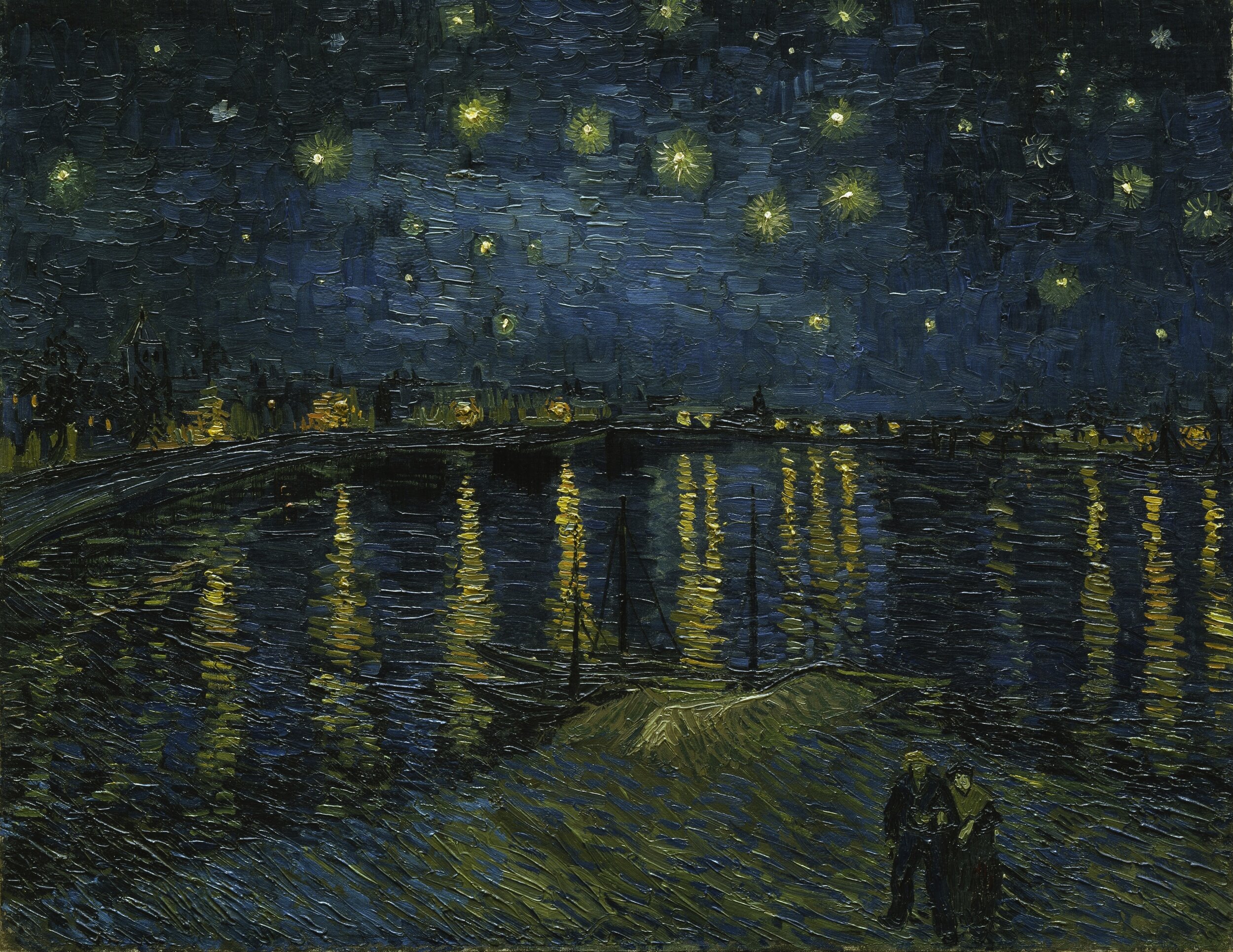
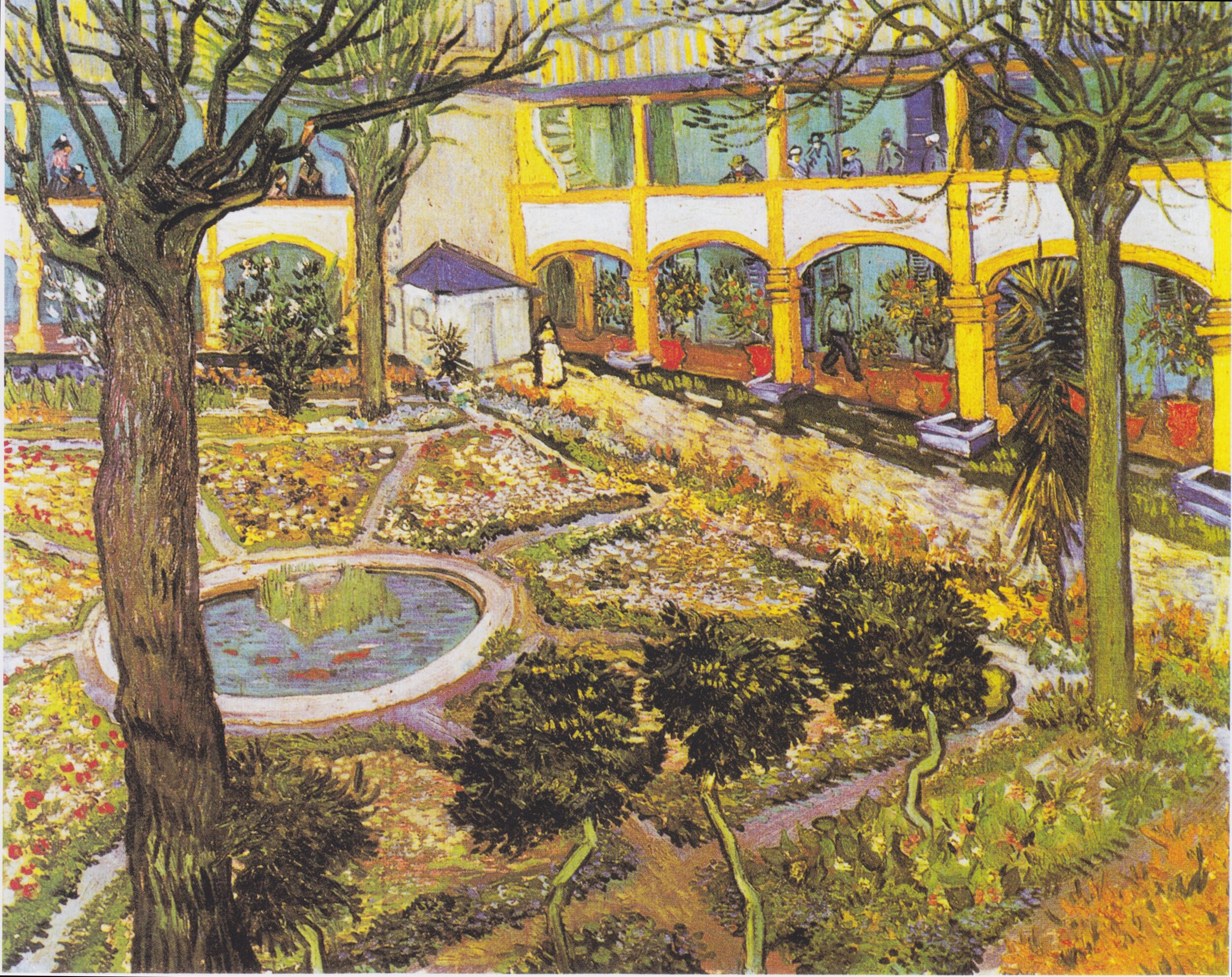
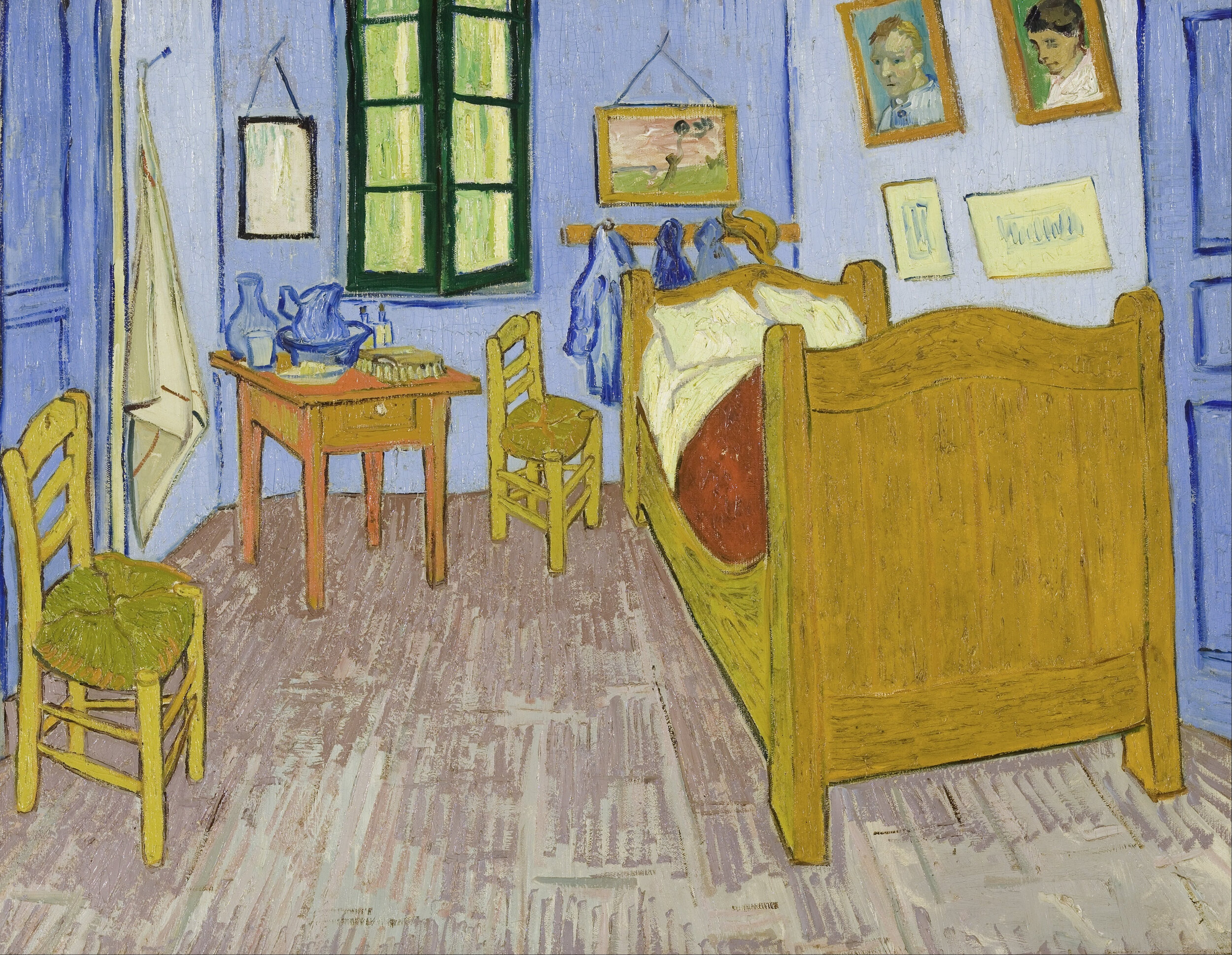

Arles | Les Maisons d’Arles
Grand Hôtel Nord-Pinus | Gault and Millau
Ancient Theater | Les Maisons d'Arles
gordes
From Arles, we head to Gordes, a charming hilltop village nestled into the foothills of the Vaucluse Mountains. En route to Gordes, perhaps we stop through Saint-Rémy-de-Provence on a Wednesday morning—market day—and leave with antique french linens and wicker and lavender and an obligatory Provençal spread—baguette, olives, cheese, and wine. We arrive in Gordes just in time to spread out our picnic and watch the sun set.
The best way to experience the town of Gordes is by walking around, meandering through narrow cobblestone streets to find the vista points, which provide views of the valley below. La Trinquette, a quaint town bistro with a lovely view, is the perfect place to pause for a drink at sunset.
There is much to see outside the town also. The Abbaye Notre-Dame de Sénanque is here, famed for its lavender. Visit the Abbey and then drive the back roads to view the purple fields that surround it. From Gordes, we take a few side trips—one to the Baptistère de Venasque, a Roman temple converted to a baptistry in the 6th century and quite a moving experience; another to Roussillon to see both the ochre-hued village and to visit quarries, Le Sentier des Ocres, that supply the town’s bright red earth. Finally, to Fontaine-de-Vaucluse, a natural spring at the foot of the Vaucluse Mountains with translucent waters. While there, we have a leisurely lunch on the terrace of Restaurant Philip, perched directly over the spring.
In Gordes:
La Trinquette |rue des Tracapelles, 84220, Gordes
Abbaye Notre-Dame de Sénanque | 84220 Gordes
Baptistère de Venasque | Place du Presbytère 84210 Venasque
Le Sentier des Ocres | 84220 Roussillon
Restaurant Philip | Chemin de la Fontaine Aux Pieds des Cascades, 84800 Fontaine de Vaucluse
Abbaye Notre-Dame de Sénanque | Wikipedia
Ocres du Luberon | Gîte Lumière in Luberon
Gordes
Rousillon | Provence Experience
Restaurant Philip | Keith van Sickle
Gordes
l'isle-sur-la-sorgue
Replenished by nature, we head to L'Isle-sur-la-Sorgue, to the markets that spill into the streets of this picturesque little town, well-known for its antiques. Each weekend and for a few select weeks each year, antiques dealers set up hundreds of stalls brimming with objects collected and coveted and now preparing for new life. The market also includes stalls selling fresh cheese and local produce, handy for a much needed mid-antiquing energy source. The Sunday market is particularly special. For lunch, we tuck into the enchanted garden at Le Jardin du Quai.
In L'Isle-sur-la-Sorgue:
The Market | Quai Jean Jaurès, 84800 L'Isle-sur-la-Sorgue
Le Jardin du Quai | 91 Avenue Julien Guigue, 84800 L'Isle-sur-la-Sorgue
Le Jardin du Quai | Gault & Millau
aix-en-provence
As we head out of the idyllic Provence countryside, we make our last stop in Aix-en-Provence for a mix of art and architecture, and to imbibe our last drops of quintessential Provence culture. We begin with a trip to the studio of Paul Cézanne, where some of the objects featured in his still life works can be found, exactly where he left them. Next, a visit to Hôtel de Caumont, an 18th century private mansion that has been meticulously restored. An art center, opened in 2015, completes the immersive experience of Hôtel de Caumont, whose architecture, decor, gardens, and art collection draw you into another world. A stop at the Café Caumont, open during the day and in the evening, is a memorable cap to a visit.
Before we leave, we take a slow stroll down the Cours Mirabeau, a famed tree-lined street, reflecting on all we have experienced from Arles to Aix as we prepare to head to the sparkling coast of Southern France.
In Aix
Atelier de Cézanne | 9 Avenue Paul Cézanne, 13100 Aix-en-Provence
Hôtel de Caumont & Café Caumont | 3 rue Joseph Cabassol, 13100 Aix-en-Provence
Cézanne’s Studio | Steffan
Hôtel de Caumont Art Center | Culture Spaces
Cours Mirabeau
A street in Aix
La Rotonde fountain, Aix
Part 2: The Coast
The Riviera
The Riviera
A window at the Matisse Museum
Hotel Negresco, Nice
Plage Mala, Cap d'Ail
les calanques de cassis
From the country, we make our way south to the coast, where we are greeted by the turquoise-hued Mediterranean waters of the Cote d’Azur. Our first stop is to the Calanques National Park, a rugged terrain that stretches between Marseille and Cassis. We hike from the Calanque Port Miou to the Calanque d’En Vau for the vistas, stopping along the way for dreamy swims in the grotto-like beaches nestled into the cliffs. If after a day of hiking and swimming the azure waters are beckoning us, we head to Plage du Corton, a few kilometers away from the Calanque Port Miou for snorkeling.
Nearby, there is much to see. The coast-hugging Clos Sainte Magdeleine and the lush Domaine du Bagnol are local wineries steeped in the charm of Cassis. Nature is resplendent at Cap Canaille, where we take in panoramic views of the Mediterranean coast from France’s highest sea cliff. A visit to Cassis for a casual lunch at Le Patio and a walk through the town’s flower-lined, windy cobblestone paths gives us a view into the way of life here. We end our time in Cassis at La Villa Madie where we have an artful dinner on the patio at sunset while the trees sway above us and the waves dance below.
In Cassis:
Calanque de Port Miou | 50 Avenue des Calanques, 13260 Cassis
Clos Sainte Magdeleine | Avenue du Revestel, 13260 Cassis
Domaine du Bagnol | 12 Avenue de Provence, 13260 Cassis
Le Patio | 11 Rue Brémond, 13260 Cassis
La Villa Madie | Avenue de Revestel-anse de Corton, 13260 Cassis
The welcome sign
Calanque Port Miou
Clos Sainte Magdeleine Winery
île de porquerolles
For our next adventure, we wander off the Côte d’Azur’s beaten path to a secret place of magic. A short ferry from Hyères deposits us in Porquerolles, an island located a few miles off the southern French coast in the Îles d'Hyères archipelago. The wild, swept-away atmosphere of Porquerolles—its white sand beaches and overflowing bougainvillea—is a far cry from the glitter and glamor of the French Riviera. We are here to luxuriate in that simplicity, which is a type of quiet elegance all its own, especially in a world of speed and plenty.
Our days in Porquerolles are devoted to basking in the timeless pleasures of the French Riviera—sea, sand, and slow living. We spend sun-filled days swimming in the crystal waters of the Plage Notre Dame. On an island with no cars, we explore by bike, winding through the trails that stretch around the island. We eat simply, picnicking on the beach to absorb every ray we can. Perhaps we have lunch on the terrace at L'Orangeraie one day. And when we’re feeling inspired to enjoy a civilized evening, we reserve a table at L'Olivier, at Le Mas du Langoustier, for a meal steeped in old-world glamour.
In Porquerolles:
Plage Notre Dame | Piste du Cap des Mèdes, 83400, Porquerolles
L'Orangeraie | Place d'Armes, 83400 Porquerolles
L’Olivier at Le Mas du Langoustier | 2588 Chemin du Langoustier, 83400 Porquerolles
In Between Pictures
Le Mas du Langoustier | Image by Martin Morrell via Conde Nast Traveler
Le Mas du Langoustier via St. Tropez Luxury
st. tropez
“It is hard to imagine France’s Mediterranean coast before it became what it is today. At the beginning of the last century the region was known for rampant poverty, a place where farmers used human excrement as fertilizer. What transformed the ailing backwater was Europe’s burgeoning leisure class, whose members arrived on vacation, seeking the healthful climate and affordable places to stay during the winter. The so-called rentiers—men and women who…lived on unearned incomes—were the designers of a new landscape of desire, and the Côte d’Azur was their canvas.”
—James McAuley | Town & Country
An hour east of Porquerolles, but worlds away, lies the preternaturally glamorous St. Tropez. A place of mythical chic. Until a hundred years ago, St. Tropez was a sleepy fishing village. In the early 20th century, a chic crowd from Paris, including Coco Chanel, began discovering the town’s certain charm. But it was Brigitte Bardot’s 1956 film And God Created Woman, set here, that put St. Tropez on the map. Almost instantly, the jet set claimed St. Tropez as its own.
Since Bardot’s time, St. Tropez has changed. It has become more commercial, more expensive, more international. The particular magic of it, its bohemian allure, has been gradually dimmed in the process. Bardot herself has said, “By destroying the huts that had fantasy, poetry, the soul of the beach was killed…before, there were lots of local craft shops, taverns, small restaurants with their own personalities. It had an incredible charm. Now, we no longer eat on simple wooden tables, but on white tablecloths…”
So, we head to St. Tropez in search of the old. We skip over Plage de Pampelonne, iconic in the Bardot era, but now quite commercial, in favor of a visit to Plage de l'Escalet, quieter and a bit more wild. We eat lunch on the terrace at Chez Camille, in operation since 1913, and known for the bouillabaisse.
We walk St. Tropez town one day, exploring the marina and the cobblestone streets and contemplating what it must have been like all those years ago. We stop at Sénéquier, an institution in St. Tropez, for the quintessential Tropézienne café experience. For dinner, oysters and a glass of wine at Chez Madeleine.
In St. Tropez:
Plage de l'Escalet |Cap Camarat, 83350 Ramatuelle, Saint-Tropez
Chez Camille | Route de Camarat – Quartier Bonne Terrasse
83350 Ramatuelle
Sénéquier | 29 Quai Jean Jaurès, 83990 Saint-Tropez
Chez Madeleine | 14 Place aux Herbes, 83990 Saint-Tropez
Sénéquier
Ville de Saint-Tropez | © J-L CHAIX
Plage de l’Escalet
View of Saint-Tropez from the Citade | © Assouline
saint-jean-cap-ferrat & beaulieu-sur-mer
From St. Tropez, we head east, passing through Nice, en route to the dreamy peninsula of Saint-Jean-Cap-Ferrat, a place overflowing with beauty, natural and built. On this lush strip of Mediterranean coast lie some of the world’s most elegant villas, notable for their architecture and history, and perhaps most of all, for the people who have called them home in the last century.
Three of these villas, open to visitors, provide a view into this world, and we’ll spend our time here immersed in the spirit and stories of these extraordinary places—testaments to the human capacity to dream and to envision, and to bring those dreams to life. Maybe we’ll do our pre-visit reading and post-visit dreaming while lounging on the beach—Plage de Passable or Plage Paloma are a couple of the lovely beaches nestled into Cap Ferrat.
First, the pink-hued Villa Ephrussi de Rothschild, perched on the Mediterranean, with some of the loveliest gardens on the Riviera. Here, we step into the world of Béatrice Ephrussi de Rothschild, the eccentric French baroness, often herself fully clad in pink, who designed the villa.
Villa Ephrussi de Rothschild | In Between Pictures
Saint-Jean-Cap-Ferrat
Villa Ephrussi de Rothschild | In Between Pictures
Villa Santo Sospir | D&A Magazine
Villa Kérylos | Pinterest
Villa Santo Sospir | Pinterest
Next, we visit Villa Santo Sospir, on the southern tip of Cap Ferrat. Alec Weisweiller promised his wife, Francine, that if they survived the Holocaust he would buy her their dream home. And so Santo Sospir, “a sacred sigh,” came into being—a vision of beauty born of pain. In 1949, Francine met Jean Cocteau, and the two shared a spiritual connection that forever transformed Santo Sospir. A house guest on and off for the next decade, Cocteau frescoed the walls of the house, transforming an already special place into a work of art.
Villa Kérylos | Divento
Our final stop is a sort of aesthetic pilgrimage to the Villa Kérylos, a Greek-inspired architectural tour de force in Beaulieu-sur-Mer, neighboring Cap Ferrat. In the early 1900s, Théodore Reinach, heir to a banking fortune, decided to use his inheritance to build an opulent villa on the French Riviera, inspired by the ancient homes on the island of Delos, Greece, which Reinach came across in his studies of ancient Greek architecture. A labor of love, with scrupulous attention paid to every detail, it’s a space that inspires deep thinking on vision, on beauty, and on the things and places we leave behind.
In Saint-Jean-Cap-Ferrat:
Plage de Passable | 15 Chemin de Passable j, 06230 Saint-Jean-Cap-Ferrat
Plage Paloma | 21B Avenue Jean Mermoz, 06230 Saint-Jean-Cap-Ferrat
Villa Ephrussi de Rothschild | 1 Avenue Ephrussi de Rothschild, 06230 Saint-Jean-Cap-Ferrat
Villa Santo Sospir | 14 Avenue Jean Cocteau, 06230 Saint-Jean-Cap-Ferrat
Villa Kérylos | Impasse Gustave Eiffel, 06310 Beaulieu-sur-Mer
èze
At last, we arrive in Èze, a hilltop village perched high above the Mediterranean, with views as far as the eye can see.
Èze is comprised of two distinct areas—a town at sea level, Èze-sur-Mer, and another 450 meters above, Èze Village. Connecting the two is a steep dirt path, the Nietzsche Trail, named after the German philosopher who climbed the trail daily during the years he lived on the French Riviera. We’ll walk in his footsteps, making the ascent while we reflect on Nietzsche’s famous words—”all truly great thoughts are conceived while walking.”
Our first stop is to Le Jardin Exotique d'Eze, a botanical garden nestled into the cliff on the site of a former medieval fortress. Rejuvenated by the scent of jasmine, we continue onward to the village, to walk the cobblestone streets. We stop to admire the baroque style of the Notre-Dame de l’Assomption, an 18th century church.
For evening enchantment, we make a reservation at the Château Eza, where we dine on the outdoor terrace at sunset, while the warm orange sun fades over the blue horizon.
In Èze:
Nietzsche Trail | Avenue du Jardin Exotique, 06360 Èze
Le Jardin Exotique d'Eze | 20 Rue du Château, 06360 Èze
Notre-Dame de l’Assomption | Place de l'Eglise, 06360 Èze
Château Eza | Rue de la Pise 06360, Èze
Notre-Dame de l’Assomption
via Château Eza
The streets of Èze Village
Nietzsche Trail
The dream of my life
Is to lie down by a slow river
And stare at the light in the trees—
To learn something by being nothing
A little while
but the rich
Lens of attention
—Mary Oliver
And so, in bits and pieces, we experienced something of Provence. Some of its charm, some of its magic, some of its beauty. The poet Mary Oliver writes a lot about attention and attentiveness as ingredients for a fulfilling life. So we close this post with a thought inspired by her. If traveling allows us to see things, perhaps it is attention that allows us to feel them. Whenever we travel again, and for all the trips we take until then in our imagination, our wish is that we may be connected to the light of our attention, available to us in Paris and Provence, but also in Portsmouth, right where we are, and to all of the places we go.

